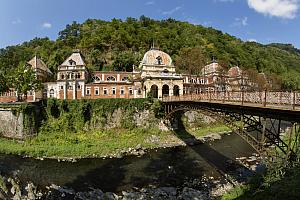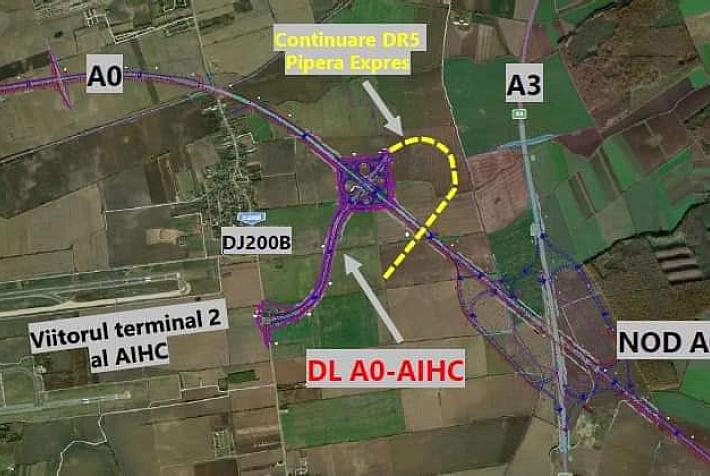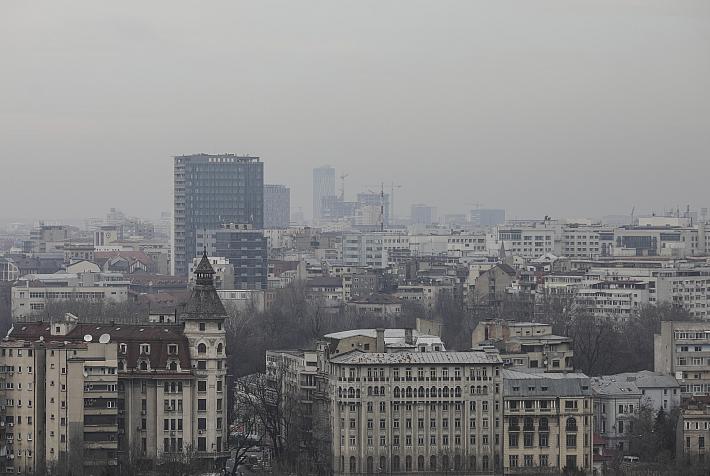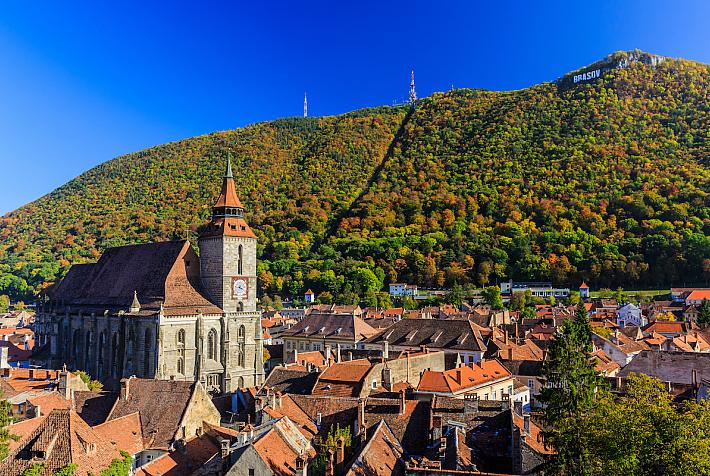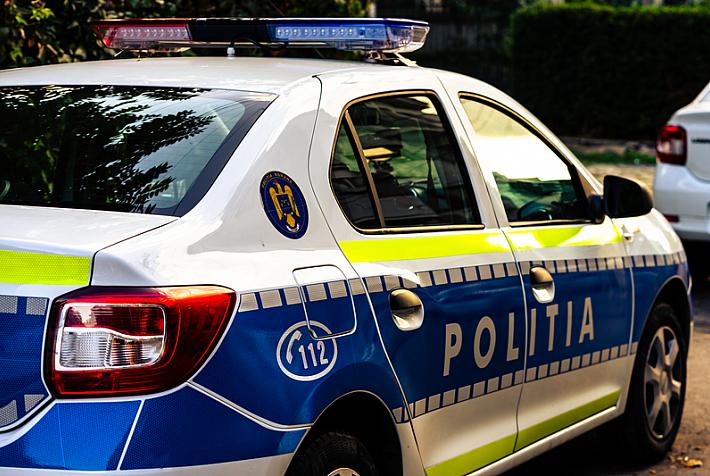Heritage of Timișoara: Solving the puzzle of the city’s patrimony one building at a time
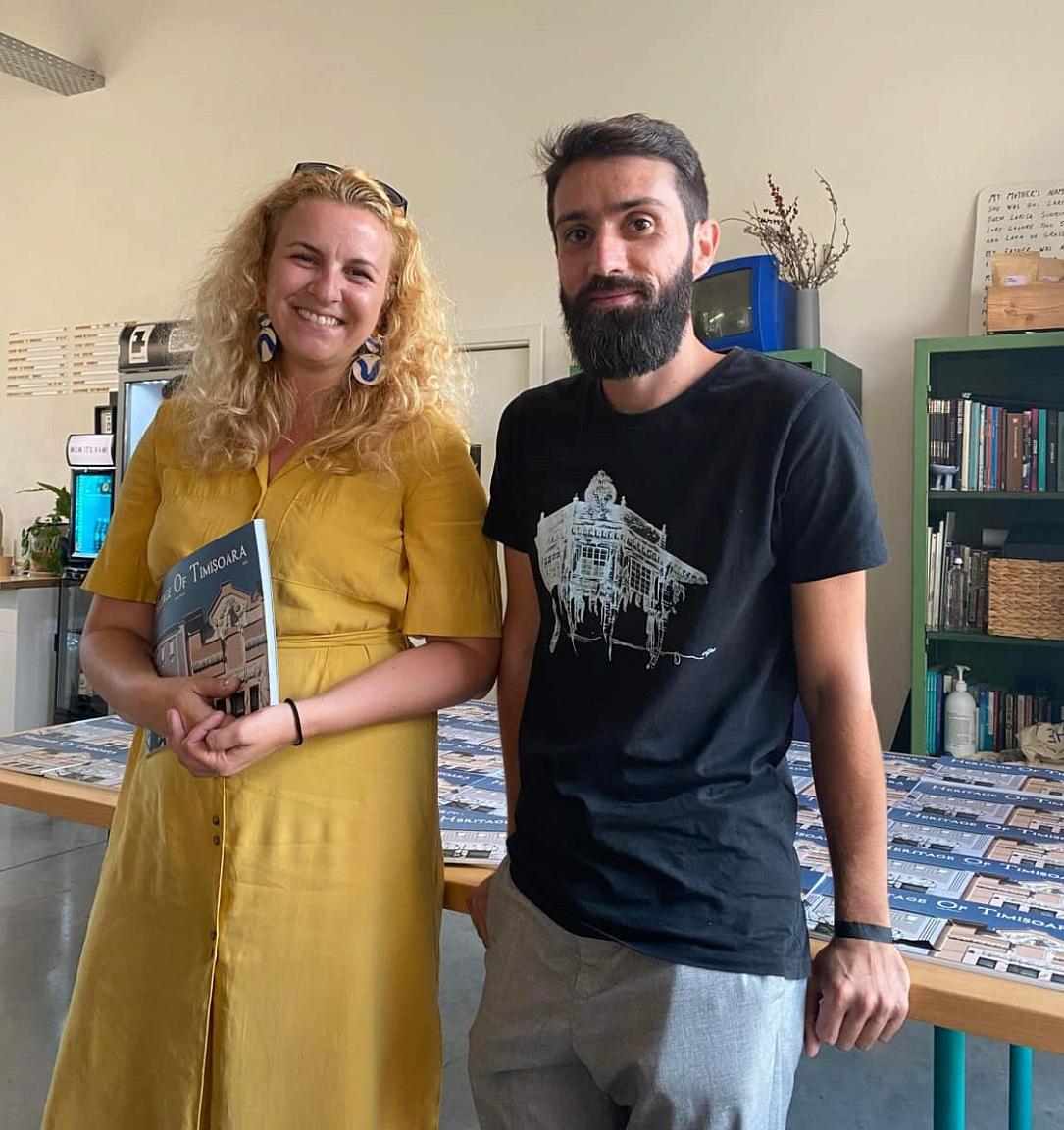
Timișoara, the western Romania city that is this year one of the holders of the European Capital of Culture title, has long been known for its architectural heritage, but how much of it is mapped and identified is a different aspect. Enter the project Heritage of Timișoara, where a team of the Prin Banat Association and many volunteers work to unearth the stories of the city’s buildings and make them available to the public to aid in the effort to preserve and raise interest in the city’s architectural legacy.
The project, which entails the mapping of the built heritage in various neighborhoods of Timișoara, is one of several run by Prin Banat. In its other initiatives, the association explored the phenomenon of migration in the region of Banat with the Moving Fireplaces project, it is implementing the Ambulance for Monuments – Banat initiative in the counties of Timiș and Caraș-Severin, and it has also documented the phenomenon of the “ghosts” in the list of the county’s historic monuments, namely those houses in rural areas that are included in official records but in reality no longer exist.
In the interview below, Alexandra Palconi-Sitov, the president of Prin Banat Association and co-founder of Heritage of Timișoara, and Mihai Moldovan, a curator and researcher with Heritage of Timișoara and a member of Prin Banat Association, told Romania Insider more about how the project started and developed, what were some of the challenges they encountered along the way, and how they engaged the city's communities in the initiative.
What were your expectations when you started Heritage of Timișoara, and how did they transform in time?
Alexandra Palconi-Sitov: The idea of the Heritage of Timișoara project started with a question: how many historical buildings are there really in Timișoara? 14,000? 10,000? If in Timiș county, in the Register of Historic Monuments, there are only 338, including the architectural and archeological monuments, public and funerary ones, regardless of how we would have done the math, 14,000 sounded implausible.
This is how Heritage of Timișoara came about, in 2015, with the noble mission of solving the mystery of the 14,000 monuments. We pictured an online platform, accessible to anyone interested in and passionate about cultural heritage, necessarily bilingual (Romanian and English so that foreign tourists visiting the then-future European Capital of Culture could read it), with contemporary and vintage photographs, and including a brief history for every building. We were planning to develop the register using a digital mapping/recording system developed in-house. The acronym was perfect and aligned with the mission of the project – it spoke of how attractive and diverse Timișoara’s built heritage is but also about the advanced degree of decay of many buildings, which, if we don’t save in time or, at least, tell their stories, we risk losing forever. HoT – as an alarm signal, an immediate need for intervention.
But, with the naiveté typical of the enthusiastic beginner, we thought we would be able to identify and research all the historical buildings in Timișoara in a relatively short time – a year or two. The reality of the fieldwork, however, made us reevaluate both the expectations and the implementation methodology. We faced many challenges and hurdles all these years, from insufficient, erroneous or inexistent information on the targeted buildings to the fact that some buildings that are landmarks of the city’s history don’t even enjoy protected status or others have been so “modernized” that they don’t retain anything of their original structure; or, even worse, some heritage buildings have disappeared altogether.
So we developed a concept through which, yearly, we would look at one historic neighborhood of the city and discover its nature, research its story, its urbanistic evolution, and most of all, also talk to the people who reside in the heritage buildings. Now, after eight years, we have had five successful yearly editions of Heritage of Timișoara dedicated to the historic neighborhoods and to some of the architects who created the extraordinary city that we know today, 200 volunteers, hundreds of hours of research (all the way to the archives in Budapest or Vienna), tens of public events, tens of collaborators, artists and experts who have joined our endeavor. We have solved the mystery of the 14,000 buildings. The answer is connected to the number of buildings that existed at the start of the 20th century in Timișoara.
In 2022, we brought out into the world the magazine Heritage of Timișoara, in a printed format - a product that lovers of cultural heritage have constantly demanded, and which weighs, apparently, more than an online platform, although we live in the era of technology.
What was the starting point for the project? Were there enough resources to rely on in this effort to map the city’s architectural memory? Were there any other partially similar initiatives?
Alexandra Palconi-Sitov: The first challenge and that aha! moment were related to the fact that many buildings, especially in the central area of Timișoara (Cetate neighborhood), had been thoroughly researched, and we had at our disposal many useful details. At the same time, for most buildings in the other historic neighborhoods - Fabric, Iosefin, Elisabetin and Mehala – we couldn’t find any information. So we started with Fabric, a historic neighborhood located at a 5-10 minute walk from Cetate, with an extraordinary history and a distinct beauty, which simply awaited to be (re)discovered.
Our activity for Heritage of Timișoara had as a starting point the research previously undertaken by architect Mihai Opriș, the best connoisseur of our city’s urban development, the one who has been studying Timișoara for more than 45 years. All we did was continue and take further his work. And in 2018, Mr Opriș joined our team. We merged our efforts in this endeavor, and we are extremely grateful to him for this. At the same time, Heritage of Timișoara would have developed a lot slower and with more difficulty had it not been for the involvement of approximately 200 volunteers throughout all these years; they joined our mission and, in time, they became full-time colleagues. One of them is Mihai Moldovan, who joined the project in 2017 as a volunteer and, in 2018 became my assistant. In 2019 we swapped roles, and he took over the management of the project, and I became his assistant. What is even more beautiful is that he, in his turn, trained other colleagues, who are now part of the project’s core team.
Why is it important to know the history of these buildings?
Mihai Moldovan: Every building, and even more so the heritage ones, means much more than a list of construction materials. They contain memories, happy or less happy stories from the distant or nearer past, which define us at a community level. Knowing the stories of the buildings that make up the city equates to knowing us, in the end, at a much deeper level.
Alexandra Palconi-Sitov: We recognized from the very beginning that, as much as we are passionate about history and architecture, we were likely to find in Timișoara’s historic buildings and neighborhoods many people who are not interested in these areas. This is why, from the very beginning, we developed an artistic component of the project to draw their attention and make them not only pay attention to us but also be proud of the buildings they live in. For every HoT edition, we worked with Timișoara artists; we offered them information about the buildings, and organized guided tours or even interviews with the residents. Based on this artistic research, they created illustrations of the buildings they grew most attached to. We currently have 90 buildings illustrated. With these illustrations, we organized exhibitions in public areas in every historic neighborhood and created more than 20,000 postcards in all these years. They could be sent for free and reached every corner of the world. This method, of using an artistic illustration, relatively simple to implement, proved in time to have a significant impact on the dialogue with the city’s residents and much more efficient than a classical photography exhibition. At the exhibitions in the public areas in the neighborhoods, for instance, people discovered that their home was illustrated, requested more details about the building (of which they confessed not knowing absolutely anything) and went home delighted, thanking us for helping them see things in a completely different light. Of course, there was some discontent: ‘My house, which is so beautiful, why isn’t it illustrated?’ Regardless of the scenario, we were happy to have managed to raise their interest in the buildings in which they live and pass by every day.

How do you select the buildings that you include on the platform? What does this process of recording and mapping historical buildings entail? Where do you have to work the most until you can add a building to the platform?
Mihai Moldovan: At the start of the project, the methodology was to tackle one historic neighborhood of the city every year. One of the first activities was to discover the neighborhood alongside the volunteers working on the project, during long walks, discovering it at its essential level. This first relationship with it helped us establish both the future approaches and the buildings we definitely knew we wanted to prioritize. When it came to recording them, we worked on the blocks that made up the neighborhood, and each volunteer had a building that they needed to document on the platform. The process of adding a new resource, namely a building, is complex when thinking of the numerous fields that need to be filled in. What we are doing is deconstruct every building into the components that define it, from ornaments, and type of roof to the number of floors and so on. Besides this, we have the archival documentation, doing the historic study - a process that is accompanied by a translation, photographing and all the technical details of the building.
Where are you with recording the historic buildings of Timișoara? How many buildings/ histories have you gathered since 2015? Have you encountered the phenomenon of the ‘ghosts’ you have seen in the county?
Mihai Moldovan: At present, we are getting close to 1,000 recorded buildings from all the historic neighborhoods we have studied. The legend of the 14,000 buildings is as mysterious as the number itself. Without coherent surveys at the city level or a centralized database, it was impossible to know the precise number of historical buildings in the city. The phenomenon of the ghosts is not as present as in rural areas; even though the number of buildings of historical value lost in the city is huge, we at least know the cause and, unfortunately, many times, we are compelled to witness powerlessly to this loss. We only need to mention the city’s industrial patrimony, the most endangered area of the local heritage.
Of the stories you have gathered so far about the city’s buildings, do you have one that impressed you more than others?
Alexandra Palconi-Sitov: This is a difficult question because every building we research has a story worth telling. What is more difficult (but fascinating most of the time) is the process of getting to a house’s story; it is like a puzzle we keep finding pieces for. Sometimes, this can last as long as several years. Inevitably, we grow attached to some buildings.
I, personally, was impressed for years with a house located on a quieter street in Fabric: the Franz Wettel House, a building that is not even protected. I had been following it since 2017 and always passed by it in wonder, especially that I could not find any information on it, and it was all shrouded in mystery. Only in 2021 did I manage to find the first pieces of the puzzle, and then everything fell into place. Not only did I discover that it was built by Franz Wettel, a well-known politician of German origin, historian, writer and owner of publishing houses, printing houses and bookstores in Timișoara and Banat, but I also found out later the story of its interwar owner and the story of the family who inhabits it today and cares for it greatly, much more so than other owners of buildings labeled as historical monuments.
On the other hand, starting with the second issue of the magazine Heritage of Timișoara – Vorpark, which I coordinated, I discovered that one of the buildings in the blocks we studied belonged to lawyer and politician Aurel Cosma; it was later inherited by his nephew, Aurel Cosma Jr.. In 1935, Aurel Cosma Jr. set up in there the newsroom of the cultural and artistic magazine Luceafărul. Between the two world wars, the street was called Aurel Cosma. These are forgotten details in our city’s history, in our shared cultural heritage, which are worth remembering and marked (at least with a simple commemorative plaque on the building’s façade). And I’m referring here to both the Franz Wettel House and the Aurel Cosma one.
Has the Heritage of Timișoara initiative raised the interest of public authorities? Did you find support in running the project? How much of their role do you cover at the moment?
Alexandra Palconi-Sitov: The project has been very well received by the authorities since its first edition, which took place in the neighborhood of Fabric in 2017. The Timișoara City Hall, the Timiș County Department for Culture and Heritage, and other professional organizations, like the Order of Architects in Romania (OAR) – Timiș Branch, have always been there for us, helped us with specialized information and even supported us financially. We are glad that, in time, we have also managed to work with the National Heritage Institute. All these partnerships are a recognition of our work. In the end, Heritage of Timișoara entails field research work that is extremely time- and human-resource consuming. We have assumed and are aware of the complementary role and added value that the project brings to the role and activity undertaken by public institutions and local authorities dealing with the preservation and promotion of cultural heritage.
Last year, you launched the first two issues of the magazine Heritage of Timișoara. Why a printed version? When is the third issue due? What will it include?
Mihai Moldovan: The need for a printed version of the project became evident from the first public events, and the demand in this respect has always been high. Besides, the printed format helps us reach another type of audience and shows, in a way, a greater recognition of our work as the book has a certain intrinsic value. The third issue of the magazine is due to be launched in June, and it is related to World Art Nouveau Day. The content of the issue is largely focused on the Secession heritage of the city. As this is a project we have assumed fully, the biggest challenge is the financial one; we are at the part where fundraising is predominant. We will launch in March a crowdfunding campaign that allows the preordering of the magazine, thus enabling the printing of the magazine.
Are you planning for this year projects dedicated to the European Capital of Culture program?
Alexandra Palconi-Sitov: Prin Banat Association has implemented since 2017 the project Cămine în mișcare (Moving Fireplaces), which was included in Timisoara’s 2016 bid for the European Capital of Culture title. With this project, we document true stories and life histories that have as a starting point the phenomenon of migration in Banat and in Europe. Just as Heritage of Timișoara, the Moving Fireplaces project entails field research work, which we undertake together with a multidisciplinary team. We then turn the collected stories into various art forms that we take back into and show to the communities that opened up to us, but in a new dimension. So far, the project generated four theater performances, four documentary films, seven art installations, exhibitions and performances, all built around the true stories of people we have talked to. In 2023, the project covers the premiere of the documentary film When Borders Get Indistinct (by Mircea Sorin Albuțiu, filmed in 2022 in Romania, Serbia, and Hungary), the launch of the podcast UZDINUZ (by Christine Cizmaș), six representations of the theater performance Youth without Age and Life without Death (directed by Ovidiu Mihăiță), an exhibition of naïve art from the region of Banat, and ten artistic residences whose results will be showcased at the Moving Fireplaces festival, scheduled to take place in Timișoara and other localities in the region between September 1st and October 29th. The beauty of the Moving Fireplaces project resides in the fact that it is one of the few projects in the cultural program taking place largely outside of the city, thus promoting the historical region of Banat and being an ambassador for Timișoara 2023, beyond the citadel’s gates.
With the projects of the Prin Banat association you cover various aspects of the heritage in the city and the region. What would be some of the lesser-known aspects related to Timișoara and Banat that would draw more people to visit these places?
Mihai Moldovan: Indeed, through the profile of our projects we reach a multitude of aspects of the material and immaterial heritage, from historical research and promotional events to recording, monitoring and even interventions to save it. Probably the most relevant characteristic of the heritage of Banat is this multiculturality reflected in the built heritage, traditions and day-to-day objects. The profound understanding of this complex phenomenon of interrelationships and reciprocal influence is vital in establishing any decisions that impact the life of communities in the area, and which, in the end, can reflect in a better tourist offer as well. In the end, we can discover the recipe for a holistic experience of discovering Banat.
(Photos courtesy of Heritage of Timișoara)
simona@romania-insider.com







